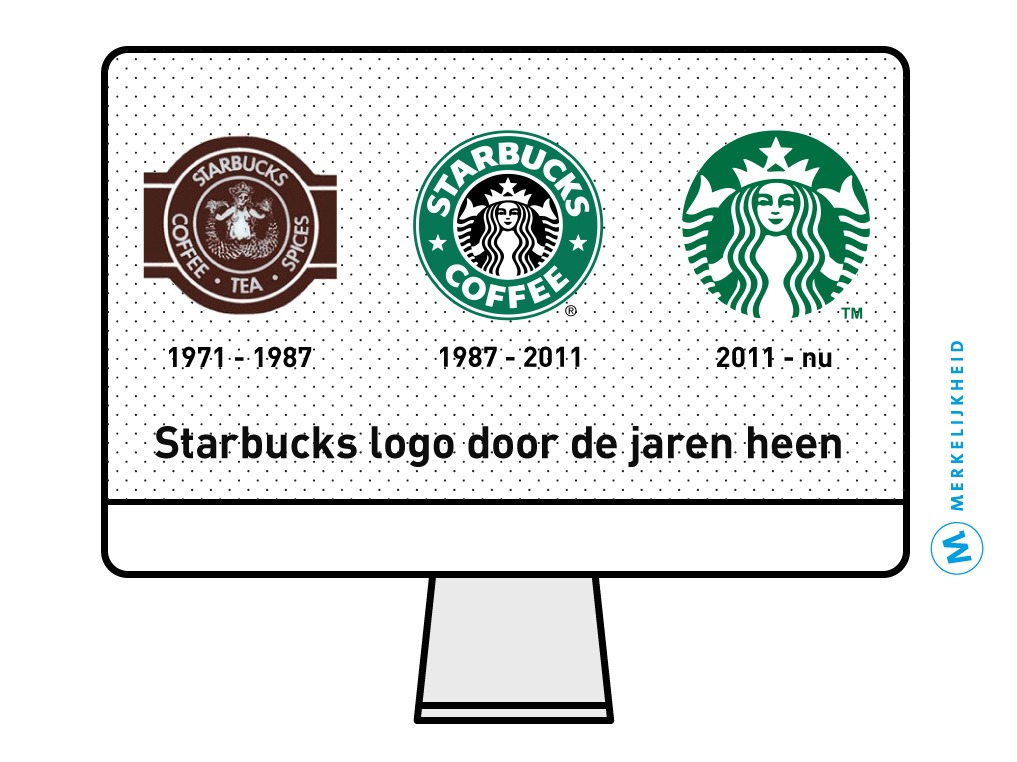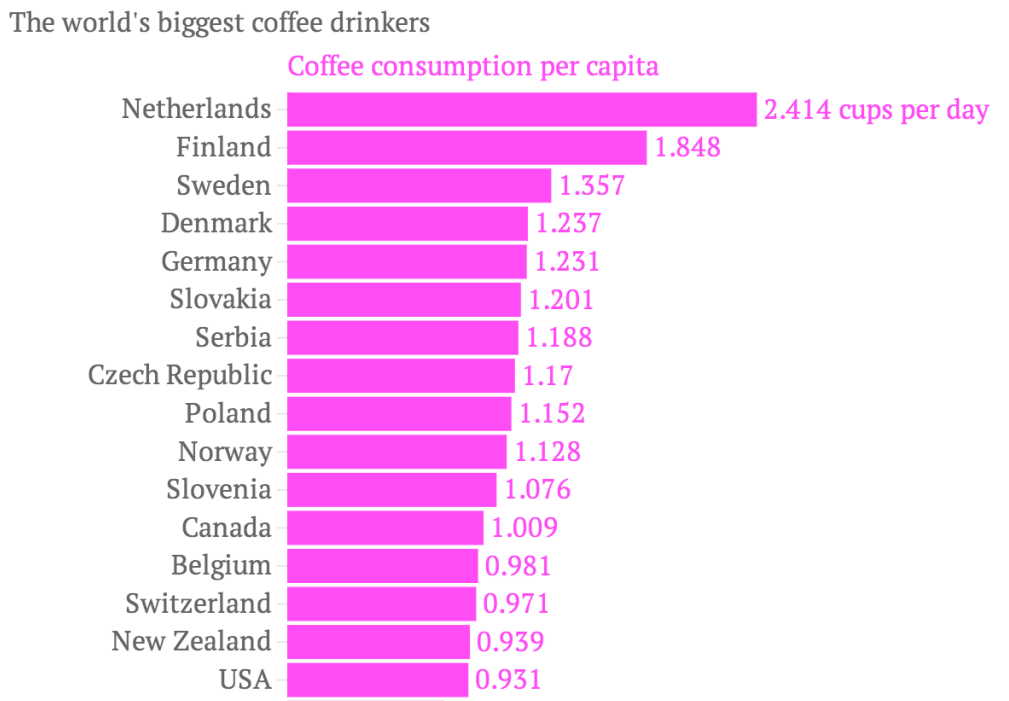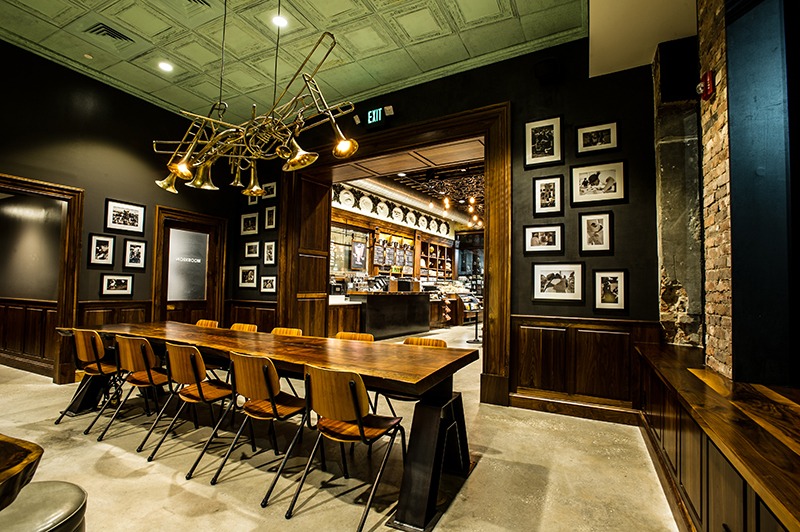*Positioning
Starbucks Positioning: trendy coffee brand or ditchwater?

Starbucks positioning hits the mark worldwide, but what exactly does the positioning entail? The brand has a large number of loyal fans and ambassadors, but at the same time, it also has a lot of opponents. We see the same picture in the media, where a positive article is interspersed with accusations of tax evasion. The brand has tens of thousands of Dutch fans, but “real” coffee lovers still prefer not to be seen there. In short, the brand is a topic of much discussion. This is why we decided to take a closer look at Starbucks’ positioning and history.
 Starbucks was founded in 1971, but it only gained momentum when former employee Howard Schultz (now still/again CEO) took over the six stores in 1987 and renamed his own coffee shops to Starbucks. Two years later, the company had 46 stores, and when it went public in 1992, it already had 140. This IPO was necessary to open even more stores, and this remained the company’s main goal until 2007. An interesting fact is that Starbucks opened an average of two stores per day during that time.
Starbucks was founded in 1971, but it only gained momentum when former employee Howard Schultz (now still/again CEO) took over the six stores in 1987 and renamed his own coffee shops to Starbucks. Two years later, the company had 46 stores, and when it went public in 1992, it already had 140. This IPO was necessary to open even more stores, and this remained the company’s main goal until 2007. An interesting fact is that Starbucks opened an average of two stores per day during that time.
Starbucks in trouble
2007 was the year that temporarily put a stop to Starbucks’ explosive growth. In a leaked memo to the Starbucks Board of Directors, Schultz writes that the “Starbucks experience” has been diluted and that growth is stagnating. The memo was made public (not by Schultz) and led to the dismissal of then-CEO Jim Donald and the reappointment of Schultz as CEO. The company returns to its old course and initiates an extensive repositioning. In 2009, Schultz closed more than 600 stores and laid off 1/3 of the employees at the headquarters as a final step to turn the tide.
It is still largely from this period that the “real” coffee lover is not to be found at Starbucks. In pursuit of higher operating efficiency, the company replaced its coffee machines with fully automatic machines after Donald took over, and the design of Starbucks locations became increasingly uniform. The coffee lover increasingly left Starbucks behind, and employees also tried in vain to sound the alarm. In 2007, the design and craftsmanship of the coffee immediately received full attention from Schultz, and the brand focused fully on innovation thereafter.
The big difference with Jim Donald is that Howard Schultz has had a vision for “the coffee shop” since the beginning and wants to do everything possible to achieve it.
Update: Here’s the Thing host Alec Baldwin interviews Howard Schultz about the origin and future of Starbucks. He talks about global ambitions and his own coffee consumption. Listen to the interview here.
Positioning of Starbucks: ‘a welcome third place’
In his eight years as CEO after the IPO, Schultz developed his vision for the best positioning for Starbucks. The positioning team wanted to position Starbucks as the fixed ‘third place’ for people, with home and work being the first two. They thought of the third place that appeared in many different cultures throughout our history, such as Roman forums, English pubs, Japanese tea houses, and German beer gardens. Starbucks had to do everything to be that third place and connect its brand to the deeper history around it.
That’s why Starbucks has comfortable chairs, free Wi-Fi, and you can stay as long as you want, something many young people are grateful for. And this positioning was a huge success. In his 2015 letter to shareholders, Schultz writes: “The Third Place concept [is] no longer novel, it’s a way of life”.
It’s important to note that that ‘third place’ means something different in every culture and this has relatively strong implications for the layout of Starbucks stores. The success of international expansion, with more than half of Starbucks stores now located outside the US, suggests that Starbucks is taking this into account.
Kunal Vora explains Starbucks’ success on Quora in a simpler way:
“A smiling guy handing you a great product in a warm and friendly environment – what more can the consumer ask for?”
Want to know more about the process by which Starbucks positioned itself so distinctly? Read the article ‘5 things I learned building the Starbucks Brand‘.
Starbucks logo en positioning
The mermaid at the center of the Starbucks logo has changed tremendously in the 40 years since the company was founded. As you can see in the comparative image above, Starbucks has increasingly simplified its logo over the years, moving closer to the “essence” of its visual identity. As Starbucks continues to grow and gain global recognition, this trend is likely to continue, as it has with brands like Shell and Nike.
Positioning Starbucks in Netherlands

Screenshot Quartz.com
Starbucks fans have been clamoring for the company to come to the Netherlands for years. The Netherlands is the world’s largest coffee consumer, as shown in the graph from Quartz, and although we have moved away from the “bakje pleur” (a slang term for coffee), it wasn’t Starbucks that caused this shift.
The Coffee Company, at least in the capital, is partly responsible for this. When asked by NRC about Starbucks’ position in the Dutch market, Jasper Uhlenbusch of The Coffee Company said they were not concerned and did not think the literal location of Starbucks was great:
“Our biggest successes are neighborhood coffee shops, with regular customers who stay longer. At train stations, you deal with a lot more passersby.”
But Starbucks is here, with about 50 locations, more than the 37 mentioned by The Coffee Company. However, according to the Starbucks Annual Report 2015, there are only 10 company-owned locations in and around Amsterdam, with the rest being licensed locations at NS train stations and Shell gas stations.
We expect Starbucks’ “third place” positioning to have little impact in the Netherlands. The friendly environment has already been established by other chains and independent coffee shops, which have already won over the hearts of Dutch coffee lovers. We don’t see them moving to Starbucks anytime soon. On the other hand, the company has an enormous amount of brand equity among tourists and young people. With more than 36 million likes on Facebook, the company is uniquely capable of getting its message out to the world. Research from Capgemini even shows that 94% of all Facebook users are either Starbucks fans or friends with a Starbucks fan!
The globally recognized brand has a good reputation here as well. Although local chains and coffee shops do have a place, we think they should be concerned about Starbucks and its marketing power.
The future of the Starbucks brand
Although we believe that Starbucks will not conquer the Netherlands with its positioning, the rest of the world is a different story. The company generates the most revenue in China after the US, and it expects to open around 900 new locations in Asia alone in 2016. The majority of the growth is expected to come from those regions and the expansion of the product offering with, for example, tea. How does Starbucks do that? The brand builds its position based on the following pillars:
Starbucks Marketing Strategy
The following data and insights are based on/distilled from the past 3 annual reports and shareholder letters of Starbucks, which can be found on their website.
- Everything is about social – The company has integrity and contributing to the world at the core of its strategy. More brands have this, but few give as much attention to it as Starbucks. In the 2015 annual report, you can read:
We also believe our Starbucks Global Responsibility strategy, commitments related to ethically sourcing high-quality coffee and contributing positively to the communities we do business in, and being an employer of choice are contributors to our objective.
A variant of this can also be found in the 2014 annual report.
And except for the accusation of tax evasion, the company seems to be doing everything it can to actually make progress in this area. The company pays for education for thousands of employees and now sources 99% of its coffee “ethically”. Whether it is actually such a social company is beyond the scope of this article, but in terms of marketing, the story, message, and proof are well put together.
- Customer satisfaction and a “personal touch” at the forefront – American friendliness and service really shine through at Starbucks. The barista asks for your name, you can customize your coffee however you like, and they always serve it with a smile. In our opinion, this certainty is one of the brand’s most powerful attributes, and Starbucks goes to great lengths to keep its employees service-oriented.
- Leverage social, digital and mobile applications – Because our country is of little importance to Starbucks, apart from a huge coffee roastery in Amsterdam, we see little of it here. However, Starbucks has tremendously successful platforms and applications. In the US, mobile pay was responsible for about 21% of sales in 2015, a 10% increase from 2014, and the company continues to focus on further growth. Online, it is one of the most successful brands, with the aforementioned 36 million Facebook likes and success on other social platforms, driving growth and a strong awareness of the company.
The core of success is the focus on permission marketing as devised by Seth Godin. Starbucks collects permission from its target audience in the form of likes, app installs, loyalty programs, and participation in promotional activities. They then use this permission to “cost-effectively” promote their products and brand.
Due to the company’s problems in 2006-2009, the “innovate or die” philosophy was hammered hard. While some companies struggle with change, Starbucks sometimes seems to have too much confidence in it, as evidenced by the enormous controversy when they didn’t print Christmas trees on their holiday cups. (What are we even talking about here? 🙂
- Localized store design
The big challenge for Starbucks is to maintain the Starbucks experience that Schultz always talks about, while still making people feel like they are in “their” Starbucks. Therefore, the brand wants to integrate local culture and customs with its own brand experience. To see this in practice, you need to travel to a city like New Orleans or Tokyo, where the brand combines its distinctive style with a strong local flavor. I was recently in New Orleans and only realized while writing this article how different the Starbucks there was.

Starbucks Canal Street , New Orleans – Source: Matthew Glac for Starbucks
Conclusion: the Starbucks positioning
e think the “third place” positioning at the heart of Starbucks’ positioning is great. It provides a strong foundation for the organization while also offering enough flexibility to adapt to changing circumstances and new markets. We highly recommend reading the article about how this positioning was established. We also admire how closely the brand sticks to its positioning, for example through the acquisition of tea brand Teavana or the expansion of its food offerings to remain relevant as a “third place”.
On the marketing front, there’s little to criticize about Starbucks. Their use of crowdsourcing platforms and embrace of various applications has paid off, and they continue to invest heavily in them. This is a sign that they understand their target audience well.
Personally, or if we only look at the Dutch market, we’re not particularly impressed by Starbucks. Where I live, I can name at least five coffee shops that are more beautiful, better, or more enjoyable. But what if I’m in a new, unfamiliar environment? Then I know what to expect from Starbucks: good service and a decent cup of coffee made just the way I like it.
If you want to learn more about positioning and how to tackle positioning challenges, check out our Positioning page, where you’ll find in-depth articles as well as dozens of examples and models for every possible positioning challenge.
Bronnen:
- http://www.seattletimes.com/seattle-news/tempest-in-a-coffee-cup-illuminates-power-of-starbucks-brand/
- http://qz.com/166983/where-the-worlds-biggest-coffee-drinkers-live/
- http://www.businessinsider.com/howard-schultz-turned-starbucks-around-2011-6?op=1&IR=T
- http://www.seattletimes.com/business/starbucks-must-find-lost-soul-schultz-says/
- Howard Schultz’s Starbucks memo
- 5 Things I Learned Building The Starbucks Brand
- http://www.econtentmag.com/Articles/Editorial/Commentary/Starbucks-and-Social-Media-Its-About-More-than-Just-Coffee-103823.htm
- http://vorige.nrc.nl/economie/article1956223.ece/Starbucks_late_nieuwkomer_op_Nederlandse_koffiemarkt
- Starbucks Fiscal 2015 Form 10-K
- Starbucks Fiscal 2014 Form 10-K
- Wikipedia https://en.wikipedia.org/wiki/Starbucks
- Foto van vrouw met cofee: Pexels